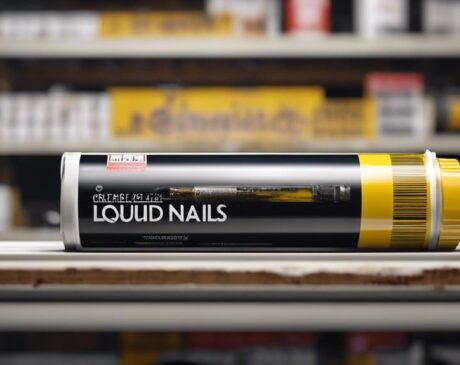Can You Use Acrylic Instead of Nail Glue?
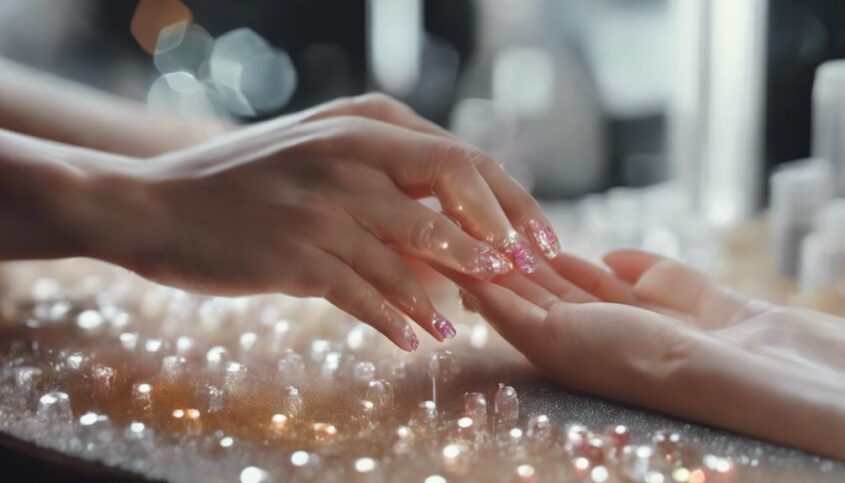
Acrylic can serve as a durable and resilient alternative to nail glue, offering long-lasting nail enhancements with unique shapes and designs. It provides a stronger bond ideal for active individuals. However, there are some cons to consider, such as potential nail damage and time-consuming maintenance. The application process involves preparing the natural nail, applying a primer, sculpting with acrylic powder and monomer liquid, then filing and sealing. When comparing durability, acrylic nails are less prone to chipping compared to nail glue. For more detailed insights on acrylic nail application, removal techniques, and expert tips, explore further.
Key Takeaways
- Acrylic offers durable, long-lasting bond as an alternative to nail glue.
- Acrylic provides stronger adhesion, ideal for active lifestyles.
- Versatile designs and unique shapes can be sculpted with acrylic.
- Acrylic results in less chipping or breaking compared to nail glue.
- Acrylic is a robust, long-lasting solution for nail enhancements.
Pros of Using Acrylic
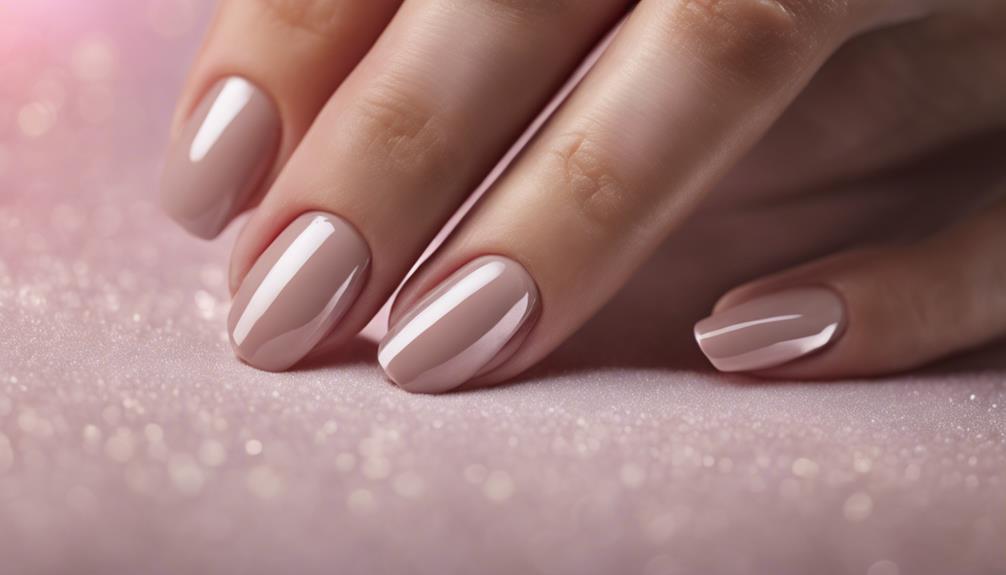
Acrylic offers a more durable and long-lasting alternative to nail glue, providing a stronger bond and increased resilience to daily wear and tear. This innovative solution has gained popularity among individuals seeking a more robust and enduring method for achieving flawless nail enhancements. Unlike traditional nail glue, acrylic forms a sturdy layer over the natural nail, offering enhanced protection and longevity.
One key advantage of using acrylic is its ability to withstand the rigors of daily activities, making it ideal for individuals with active lifestyles. Whether typing on a keyboard, performing household chores, or engaging in sports, acrylic nails maintain their integrity and beauty. The strength of the acrylic material ensures that the nail enhancements remain intact and chip-free for an extended period.
Moreover, acrylic allows for versatile nail designs, ranging from simple elegance to intricate artwork. The flexibility of acrylic enables nail technicians to sculpt unique shapes and lengths, catering to individual preferences. With acrylic, nail enthusiasts can express their creativity and style while enjoying the durability and longevity that this innovative solution provides.
Cons of Using Acrylic
Despite its many advantages, there are some drawbacks to consider when using acrylic for nail enhancements. One of the main disadvantages is the potential damage acrylic can cause to natural nails if not applied or removed correctly. Acrylic enhancements require regular maintenance, which can be time-consuming and costly. Additionally, some people may experience allergic reactions to the chemicals present in acrylic products. It is essential to be aware of these cons before deciding to use acrylic for nail enhancements.
| Cons of Using Acrylic | ||
|---|---|---|
| Potential nail damage | Time-consuming maintenance | Allergic reactions |
| Requires skill to apply | Risk of overexposure to chemicals | Removal process can weaken nails |
Application Process With Acrylic
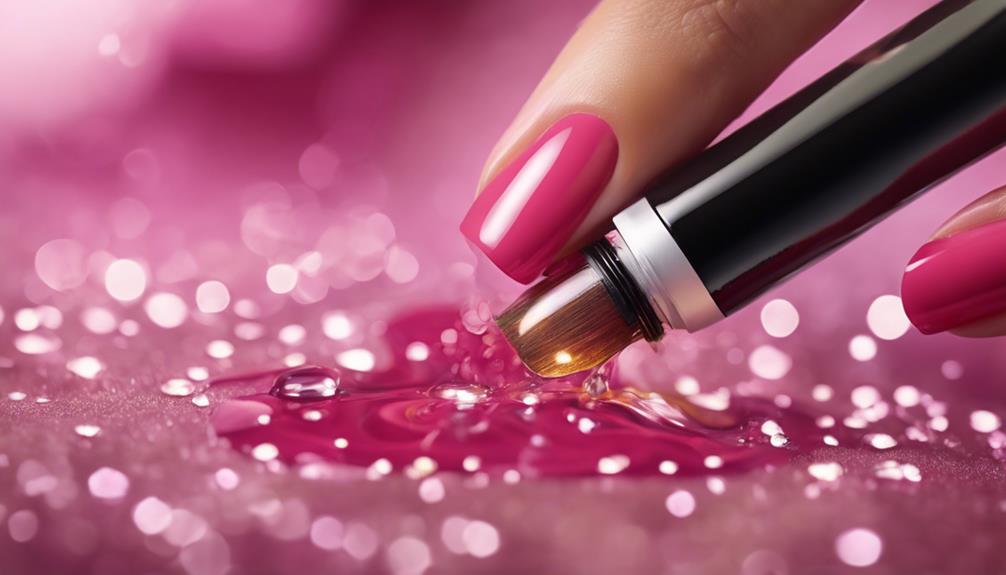
When considering the application process with acrylic for nail enhancements, it is important to understand the steps involved to ensure a successful and lasting outcome. The process typically begins with preparing the natural nail by gently pushing back the cuticles and removing any shine from the surface. Next, a primer is applied to help the acrylic adhere properly to the nail plate. Then, acrylic powder is mixed with monomer liquid to create a bead of acrylic that is sculpted onto the nail to achieve the desired shape and length. This step requires precision and skill to ensure a smooth and even application. Once the acrylic has dried and hardened, it is filed and shaped to perfection. Finally, a top coat is applied to seal the acrylic and add shine. This application process with acrylic allows for creativity and customization, making it a popular choice for nail enhancements among those seeking innovative and long-lasting results.
Comparing Durability: Acrylic Vs. Nail Glue
In the realm of nail enhancements, the durability of acrylic and nail glue stands as a crucial point of comparison. Acrylic nails are renowned for their robustness, providing a sturdy and long-lasting solution for those seeking resilient nail enhancements. The acrylic application process involves a mixture of liquid monomer and powder polymer, which forms a durable and hard layer on the nails when exposed to air. This results in nails that are less prone to chipping or breaking, offering extended wear time compared to nail glue.
On the other hand, nail glue, while convenient for quick fixes and temporary solutions, may not provide the same level of durability as acrylic. Nail glue is a temporary bonding agent that can be used for attaching artificial nails or fixing natural nails. However, its adhesive properties may not withstand daily activities and wear as effectively as acrylic.
Removal Techniques for Acrylic
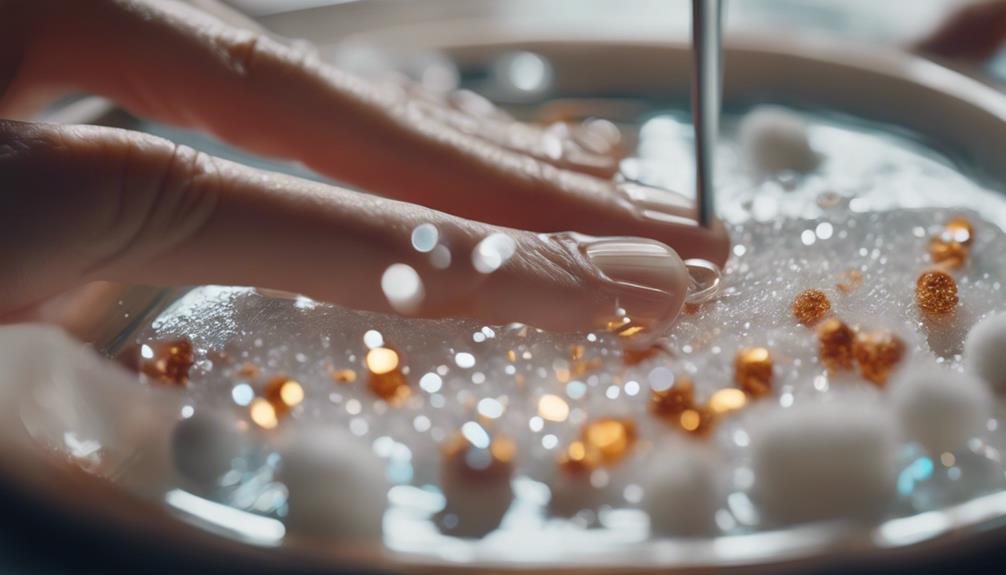
When it comes to removing acrylic nails, there are several techniques to consider. Some opt for the soaking method using acetone, while others prefer buffing and filing to break down the acrylic layers. Alternatively, seeking professional removal services can ensure a safe and efficient process.
Soaking in Acetone
Occasionally, professional nail technicians utilize acetone as a primary method for removing acrylic nails. Acetone is a powerful solvent that effectively breaks down the acrylic material, making it easier to remove. To soak acrylic nails in acetone, technicians typically use cotton balls soaked in acetone, wrapping them around the nails and securing them with foil to allow for maximum contact and penetration. This soaking process softens the acrylic, allowing it to be gently lifted off without causing damage to the natural nail. While soaking in acetone can be time-consuming, it is a common and effective technique for safely removing acrylic nails without causing harm to the natural nail bed.
Buffing and Filing
Utilizing buffing and filing techniques is another effective method for removing acrylic nails without causing damage to the natural nail bed. Buffing involves using a fine-grit buffer to gently remove the acrylic layers from the nails. This process smoothens the surface and reduces the thickness of the acrylic, making it easier to file off. Filing, on the other hand, requires a nail file to carefully file away the acrylic until it is completely removed. It is important to be gentle while buffing and filing to avoid damaging the natural nails. Remember to moisturize and nourish the nails after this process to keep them healthy and strong. Buffing and filing provide a DIY approach to acrylic nail removal that can be done at home with care and precision.
Professional Removal Services
Professional nail technicians offer specialized removal techniques for acrylic nails, ensuring a safe and efficient process for clients seeking to transition from artificial to natural nails. One innovative method involves soaking the acrylic nails in acetone to gently dissolve the adhesive bond between the artificial nail and the natural nail bed. This technique minimizes damage to the natural nail and cuticles while effectively removing the acrylic. Additionally, some salons utilize electric files with specialized attachments to carefully file away the acrylic layers without causing harm to the underlying nail. These professional removal services not only prioritize the health of the client's nails but also provide a seamless transition for those looking to maintain the integrity of their natural nails post-acrylic.
Expert Tips for Using Acrylic
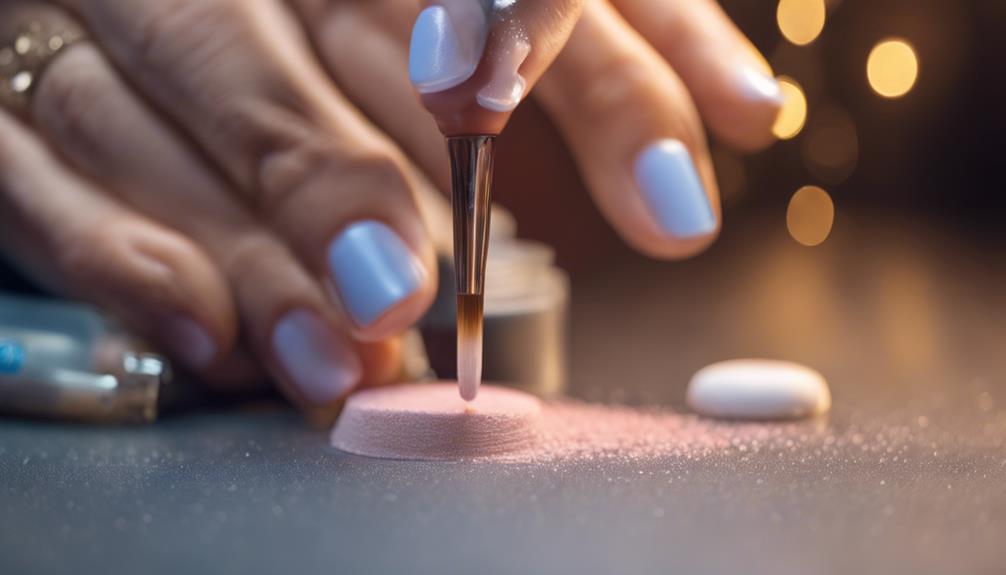
When applying acrylic for nail enhancements, mastering the proper techniques is crucial for a flawless finish. Understanding the correct acrylic curing methods ensures durability and longevity of the nail enhancements. Let's explore the key points of acrylic application techniques and the importance of proper curing for professional-looking results.
Acrylic Application Techniques
For successful acrylic application, mastering the proper techniques is essential. To achieve flawless results, consider the following tips:
- Prep Work: Begin by properly prepping the nails, ensuring they are clean, dry, and free of any oils. Use a gentle buffer to roughen the surface slightly for better adhesion.
- Liquid-to-Powder Ratio: Achieving the right consistency is crucial. Practice getting the perfect balance of liquid monomer and acrylic powder to create a smooth and workable mixture.
- Application Technique: Use a gentle touch and apply the acrylic mixture evenly, starting from the cuticle and working towards the tip. Ensure the product is distributed evenly to avoid lumps or bumps.
Proper Acrylic Curing Methods
To ensure optimal results when using acrylic for nail enhancements, mastering proper curing methods is paramount. When applying acrylic, utilizing UV or LED lamps is the key to achieving a durable and long-lasting finish. For UV lamps, ensure a minimum curing time of two minutes per layer, while LED lamps typically require around 30-60 seconds for each layer. To enhance the curing process, consider using a high-quality curing agent or topcoat specifically designed for acrylic nails. Additionally, proper hand positioning under the lamp and consistent application thickness are crucial factors in achieving thorough curing. By following these innovative techniques with precision and attention to detail, you can elevate your acrylic nail enhancements to the next level of perfection.
Frequently Asked Questions
Can Acrylic Be Used as a Temporary Alternative to Nail Glue?
Acrylic can serve as a temporary alternative to nail glue, offering a durable and long-lasting bond for nail enhancements. When applied correctly, acrylic can provide strength and stability, making it a suitable substitute in some situations.
Is There a Specific Brand or Type of Acrylic That Works Best as a Substitute for Nail Glue?
For a reliable alternative to nail glue, consider specific brands like X or Y acrylics known for their adhesive properties. Experiment with different types to find the best match for your needs, ensuring a secure and stylish application.
Are There Any Potential Long-Term Effects of Using Acrylic Instead of Nail Glue?
Using acrylic instead of nail glue may lead to potential long-term effects such as weakening of the natural nail, increased risk of fungal infections, and allergic reactions. It is advisable to consult a professional for proper guidance.
Can Acrylic Be Easily Removed at Home Like Nail Glue?
Acrylic nails can be removed at home using a gentle acetone soak or through filing. However, proper care and technique are essential to prevent damage to the natural nail. Consult a professional for guidance.
Are There Any Special Considerations or Precautions to Take When Using Acrylic Instead of Nail Glue?
When considering the use of acrylic instead of nail glue, it is important to note any potential differences in application techniques, curing times, and potential reactions with other products. Always follow manufacturer's instructions for optimal results.

